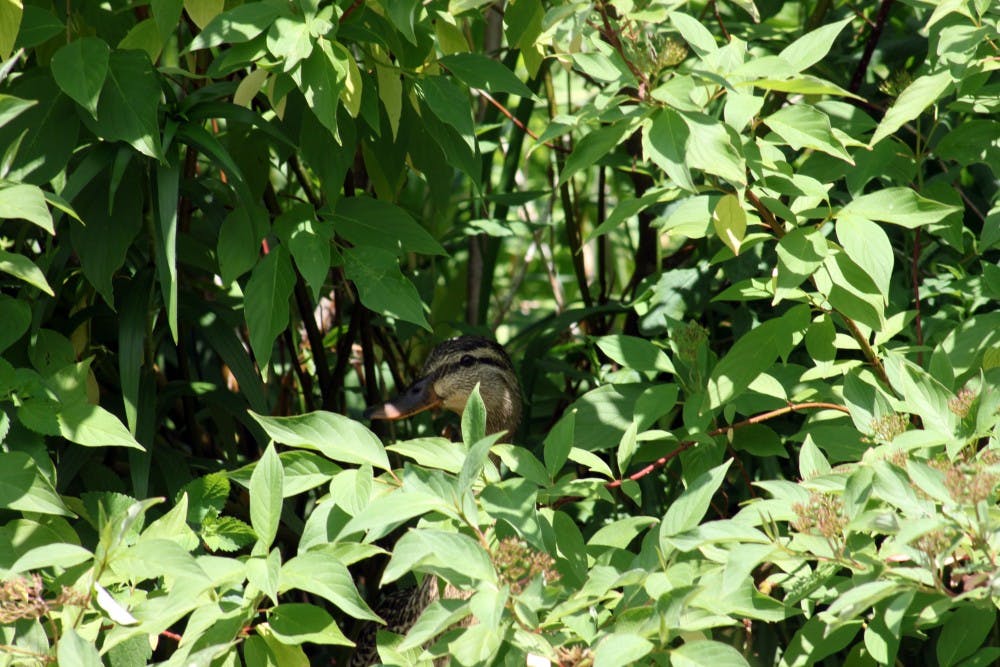A duck's tale: Family of ducks migrates to Brooks Hall courtyard every summer
Six ducklings and their mother are making the courtyard in Brooks Hall their home this summer.
Each spring for three years, a female duck has migrated to the courtyard in lateApril to lay her eggs. After about 35 days, the eggs hatch, and the ducklings and mother live in the patio of the greenhouse until their fly feathers have fully developed.
Greenhouse assistant Chelsea Ellis, biology major and Sandusky senior said she has worked at the Brooks Hall Greenhouse for two years and has watched the annual event.
"It doesn't take long for the eggs to hatch. Before I knew it, there were these little puffy ducklings swimming in the ponds," said Ellis, whose concentration is in ornithology, the study of birds.
The duck laid seven eggs, but only six ducklings hatched. According to Ducks Unlimited, a conservation group, it takes 50 to 70 days for ducklings grow flight feathers.
"In most nests, at least one bird is unable to survive the period in between birth and flight," Ellis said.
Ellis said the mother duck can often be seen in the Fabiano Botanical Garden getting food.
"It's the mother duck's choice where she nests, and she's nested behind the green house because she probably knows it's safe for her ducklings," Ellis said. "It's easy for her to leave them (at the greenhouse) where the only other company they have is the bees while she goes around campus looking for food."
The area where the ducks have made their home is a preexisting home to Central Michigan University's bee farm. The open area has been modified to keep the ducklings safe.
"We just up a fence so that the ducklings wouldn't wander off near the drain," Ellis said. "We've had a couple of them get stuck in the drain. Other than the fence we haven't bothered them much. We let them do their thing while we attend to the bees."




